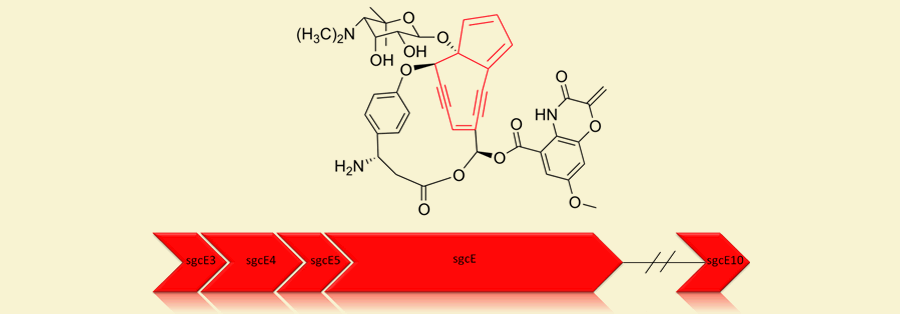Gene Expression and Antibiotic Biosynthesis
As part of a long-standing collaboration with the Bauer Lab in Biochemistry at IU, our research interests lie broadly in using various bioinorganic spectroscopic methods (EPR, Raman, transient and low temperature absorption) to evaluate metalloprotein or chromophore-bound active sites pertinent to metal-mediated and photosynthetic gene expression. These proteins are critical players in respiration and photosynthesis, and are primarily related to signaling (i.e. kinase activity) or DNA binding events.
Related to this work, but connected more closely to our synthetic enediyne projects, current research efforts are focused on studying the biosynthesis of the �warhead� in Lidamycin more commonly known as C-1027. Lidamycin is a member of the 9-membered ring enediyne antibiotic family and is one of the most potent antitumor agents. Lidamycin and other enediynes intercalate into the minor groove of DNA, where the warhead undergoes Bergman cycloaromatization. The diradical then abstracts an H-atom from deoxyribose that leads to DNA scission in the presence of dioxygen. In the absence of oxygen, interstrand cross-links occur which induces apoptosis of the cell.

The putative minimal warhead gene cassette in Streptomyces globisporus is thought to be responsible for the biosynthesis of this powerful precursor. One of the key interwoven themes involving the proteins expressed by this gene cassette is that they may be bioinorganic in nature. Our research focuses on genetic approaches, in close collaboration with the Bauer lab at IU, to designate function to the genes responsible for the warhead biosynthesis and biochemical and spectroscopic methods to characterize the proteins coded by the genes.

